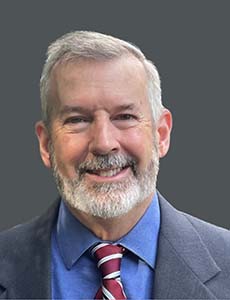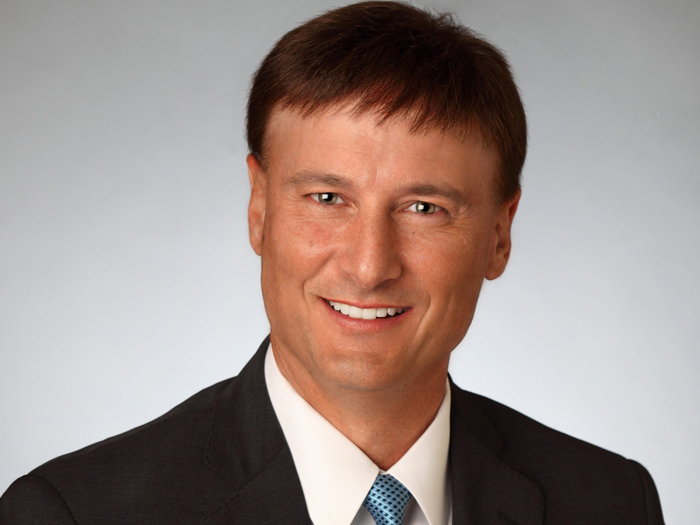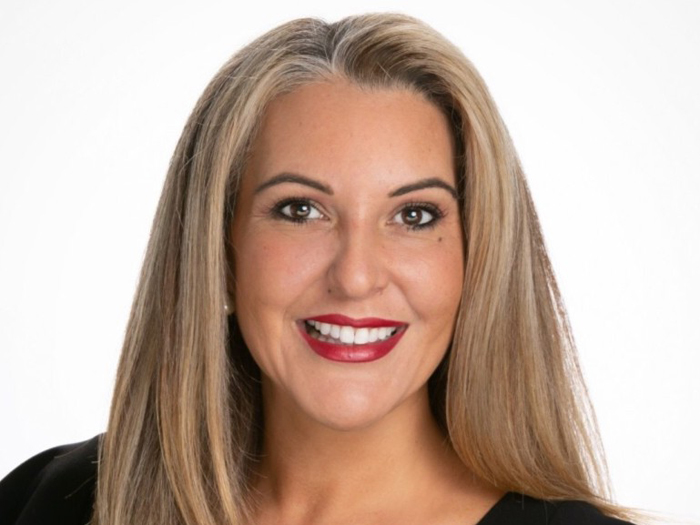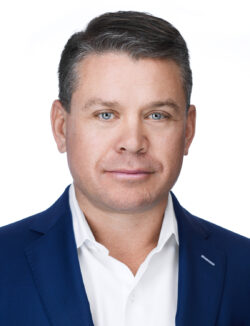2023 Teddy Awards | Getting Aggressive with Vocational Rehab. How One Health System Saved $10 Million in Claims Costs
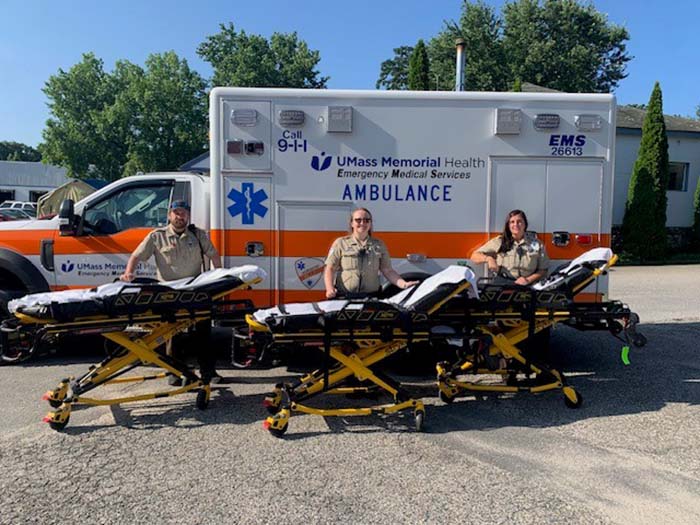
On any given day, paramedics in Central Massachusetts race to answer the call of someone in urgent need of medical attention.
But depending on the ambulance vehicle available, they may or may not have a stretcher with powered load capabilities on board. If they find themselves with a manual stretcher, this could mean heavy lifting and potentially significant musculoskeletal strain for the EMTs.
This was the predicament a young EMT found himself in last winter while attending to a call in Worcester, the state’s second-largest city. Having managed to get the patient onto a stretcher, his next step was to quickly get the person into the ambulance vehicle.
Just as he was manually loading the occupied stretcher into the truck, the patient happened to turn to one side, leaving the EMT to bear the crushing, disc-herniating weight of both the patient and the stretcher.
This is the painful story the EMT shared with UMASS Memorial Health’s nurse case manager Julie Hewey the day after the incident.
“I’ve heard a lot of stories,” Hewey said. “[Paramedics] have a challenging role here in the health system in the city.”
Caring for Injured Workers — Right Away
For the past five years, Hewey has been helping injured paramedics and hospital employees, also known as caregivers, of UMMH connect to the full spectrum of resources available to them.
Rather than an insurance adjuster making the first contact with an injured employee, nurse case managers like Hewey in the occupational injury care division (OIC) at UMMH reach out, explained Scott Alexander, manager of occupational injury care.
“We help to guide them to getting care as soon as possible for any injury,” Hewey said.
But before nurse case managers reach out, injured UMMH employees have access to two main urgent care options, explained Dr. Robert Klugman, associate vice president, medical director of employee health and occupational medicine at UMMH.
“They may go to the emergency room, or they may come directly to the [employee] clinic, depending on the injury and situation,” Klugman said.
“But one of our case managers will immediately pick up that case and contact that individual and help them to arrange for a visit to the clinic, which is done in real time very, very quickly with one of our clinicians.”
With over 20,000 employees at five campuses and ancillary locations, UMMH is the largest employer in Central Massachusetts. As a self-insured and self-administered health care system, UMMH sits apart from the lion’s share of organizations in the state, Klugman said.
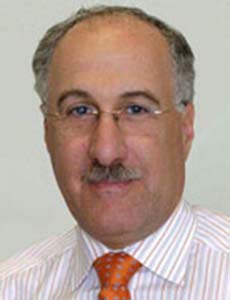
Dr. Robert Klugman, associate vice president, medical director of employee health and occupational medicine, UMMH
This position makes it much easier for injured UMASS workers to find a health care provider.
Because Massachusetts has some of the lowest workers’ comp reimbursement rates in the country, “it’s very difficult to find providers that will accept those rates … which really delays care,” Klugman said.
“But because we’re self-insured and self-administered, we can pay people appropriately to really get the work done that we need,” Klugman said, referring to the speed at which injured employees can access critical imaging services like MRIs and CT scans, as well as commonly prescribed physical and occupational therapy for musculoskeletal injuries.
Technically, after sustaining an injury on the job, the young EMT could have chosen to receive care elsewhere, per state law. But at UMMH, Klugman said, “virtually 100% of the injured workers stay with us for their care through employee health.”
Elevating the Value of Workers
Through what Klugman called UMMH’s “wraparound” approach to occupational care, the OIC prioritizes getting injured employees the therapeutic support they need while simultaneously guiding them through a multitude of resources to advocate for themselves and maintain their employment.
Klugman said his team aims for each injured UMMH caregiver to feel fully supported.
“They have a case manager they can reach out to anytime. They have a relationship with the adjuster,” he said. “And the focus, again, is really to support them, represent their value in the organization and get them healthy and back into the workplace safely and effectively.”
In the case of the young EMT, a successful surgery and remarkable rehabilitation process helped him resume work at full capacity within six months.
But because not every UMMH employee experiences the same recovery journey, the OIC has what Klugman described as an aggressive accommodation program to find ways for workers to resume their work as they heal.
And when an injury leaves an employee permanently unable to fulfill their pre-injury role, the OIC team has a refined vocational rehabilitation program to offer them alternate career opportunities at UMMH.
“Since we are such a big organization with so many different types of jobs … even if somebody has a permanent restriction and can’t return to their same job, we can place them elsewhere within the system, as opposed to going through outside [vocational rehab],” Alexander said.
Although the program’s success has been built upon strong interdepartmental collaboration, UMMH maintains partnerships with local adult education programs that help injured UMMH employees boost their skills to qualify for other positions within the health system.
Additionally, the OIC may pay the employee’s salary while they participate in on-the-job training.
Since UMMH is recognized as an employer of choice in the state, “the majority of people do want to stay here,” said Katherine Edwards, manager of return-to-work and injury prevention in the OIC.
In fact, during the Risk & Insurance interview, Edwards enthusiastically shared a rewarding example of a former personal care aide who would soon advance to a higher-paying position in a UMMH clinic because of her participation in the vocational rehab program.
“So, those are the kinds of things that I’ve tried to do with people who are either struggling or clearly need another position to go to,” Edwards shared.
The OIC team views the vocational rehab program’s success as vital to preventing many claims from ending up in lengthy litigation or resulting in excessive indemnity payouts.
“We’re able to keep [these workers employed] within the UMMH system and mitigate future exposures,” Alexander added.
Formalized in 2005 through a joint effort between the OIC, human resources and the legal department, the program has become an integral part of UMMH’s human resource framework.
“People know how it works, what the goals are, and that definitely helps too — so it’s a team effort,” Edwards said.
“But it’s always rewarding when you can get somebody back to work into a situation that’s going to work for them and the organization,” she added.
The rewards have also been felt at the organization’s bottom line. Since the program’s inception, UMMH has saved over $10 million through vocational rehab. “This figure encompasses cost avoidance from prompt placement [usually within five weeks of release to work] as well as a reduction of potential legal exposure,” the company shared in its Teddy award nomination.
Although UMASS has grown exponentially over the past five years by expanding services at its flagship campus, integrating another hospital into its network and bringing on 4,000 employees in the process, the health system’s rate of litigation has remained low — an average of 0.04% over the past five years versus the national average of 31%.
“We really wrap around these folks and really support them, and I think that’s evidenced by the fact that they have faith in us to stay with us through their entire care. It also is reflected in the fact that our litigation rate is very small, very low,” Klugman said.
When Departments Collaborate, Everyone Wins
From her vantage point as a case manager, Hewey, like Edwards, also gives ample thought to the work of caregivers at UMMH.
She’s often wondered what enhancements could make their experiences on the job better and safer — especially the paramedics.
Well before the stretcher incident that left the young EMT with a severely herniated disc, Hewey had been thinking about ways to reduce injuries among paramedics. Having worked in employee health for a decade, she has seen countless paramedics left with shoulder and back injuries by the physical and time-sensitive demands of their work.
“These workers are usually in very challenging situations. They’re trying to mobilize patients from the home setting to the hospital setting as quickly as possible. And the physical exertion of all of that, over time, predisposes them to musculoskeletal injury,” she said.
National injury statistics over the past decade have also shown that emergency medical services workers tend to have higher injury rates than those in other occupations.
“My thought has always been, ‘If we can engineer out some of the physical challenges, that would of course be in everybody’s best interest.’ ”
As she supported the young EMT’s recovery, Hewey revisited studies she had read about significant injury reductions when ambulance fleets were fully outfitted with powered stretcher and load systems.
Specifically, one 2017 study compared paramedic injury rates in two Canadian towns, providing compelling data that inspired her to explore the possibility of fully upgrading UMMH’s ambulance fleet with powered load systems.
The study analyzed injury incidence rates, days lost and compensation costs in Niagara Emergency Medical Service (NEMS) and Hamilton Paramedic Service (HPS) four years before and one year after implementation of powered stretcher and load systems in NEMS. The HPS fleet maintained manual stretchers.
“This study really hit home with me,” Hewey said. “The difference in injuries was huge!”
Before the intervention, stretcher-related musculoskeletal disorder incidence rates averaged 20.0 (±6.8) and 17.9 (±6.4) per 100 full-time equivalents, in NEMS and HPS respectively.
One year after the powered load stretchers were introduced in NEMS, musculoskeletal disorder incidence rates decreased by 78%. At HPS, however, where manual stretchers remained, incidence rates among paramedics increased.
Hewey found the costs for implementation also proved to be reasonable, as the study showed NEMS recovering their expense within the seven-year service life of the stretchers.
Although most of the 15 ambulances at UMMH had already been updated with powered loading stretchers as of December 2022, Hewey wondered what it would take to speed up the outfitting of the entire fleet.
“[UMMH was] phasing these stretchers in over time,” she said. “I felt that it would be great to get them all this year and just eliminate the issue.”
But competition for resources in health care systems can be fierce, and Hewey wasn’t certain that her proposal would find legs. That was until she submitted her idea to UMMH’s innovation station and met Robert Pitney, process improvement engagement and system co-owner.
Within a week of submitting her idea, Pitney reached out to help Hewey refine what would become a winning proposal, complete with injury statistics from OIC’s claims administration system (including incidence rates, lost times and cost), as well as additional peer-reviewed research.
As of June, UMMH has secured grant funding that will ensure every ambulance truck in its fleet has a powered loading stretcher by the end of this year.
“The nice thing about it is the trucks will all be consistent,” Hewey shared with relief.
And Hewey’s confidence in UMMH’s innovation program to activate employee-generated solutions has also boosted.
“I was very impressed by the idea system itself,” she said, and “how an employee such as I had this idea and it actually came to fruition. It was very rewarding.”
Keeping Workplace Violence at Bay
As they look toward lower injury rates among paramedics, Klugman and his colleagues also have their attention set on reducing incidents of workplace violence at UMMH.
“Several years ago, we identified workplace violence and how health care worker risk is one of our top priorities for workplace safety, along with lifting and blood-borne pathogens,” Klugman said.
Patient handling and workplace violence injuries have increased at such an alarming rate that reducing these risks for staff has become the primary focus of UMMH leadership.
“Back two or three years ago, there was a definite feeling in the environment of lack of safety by staff; they felt at risk and in danger,” Klugman said. “And we’re hearing from a lot of staff now that they’re feeling much more secure, much more prepared, much more supported in terms of the efforts that are underway.”
Under the leadership of UMASS Memorial Medical Center president Michael Gustafson, UMMH has launched a comprehensive workplace violence-reduction program. Its components range from prevention and mitigation, preparedness and recognition to recovery, learning and response, Klugman shared.
Aspects of this program can be felt at numerous touchpoints throughout the health care system, starting with entry at any UMMH hospital. Codes of conduct are shared the moment visitors register at hospital entrances, and health care workers across the organization are receiving extensive multilevel training on how to identify, address and de-escalate aggression.
From the analysis it has conducted to identify the root causes of major aggression and harmful events, UMMH has been able to equip its most vulnerable staff members with wearable safety devices that alert their coworkers immediately if they feel threatened and require assistance.
And much of the workplace violence at UMMH can be closely associated with its frontline position in the state’s mental health crisis.
“[This is a] huge issue for us, the whole mental health crisis,” Klugman said.
“We’re one of the largest regional sites for emergency mental health, so we have people who come in and need to be in other settings but that we cannot find other settings for — sometimes for months or years — who stay with us. And we have to manage,” he continued.
“It’s a huge challenge for us relative to the behavioral health issues and the lack of society’s ability to ramp up and provide the care to help these people in the community. So [it’s] a huge source of stress for us.”
Yet despite the stress associated with caring for patients with severe behavioral health issues — not to mention the fatigue many UMMH staff feel after treating 1,000 patients at one of the largest field hospitals in the U.S. during the pandemic — they continue to bring their A game to work every day.
“We continue to hear day after day from patients and families about the superb care … [the] tremendous level of caring and commitment that continues to be demonstrated by our staff,” Klugman said.
“I think the environment here is one where people feel supported, appreciated. I think that’s a piece of it.” It’s also a key piece of UMMH earning its 2023 Teddy Award. &
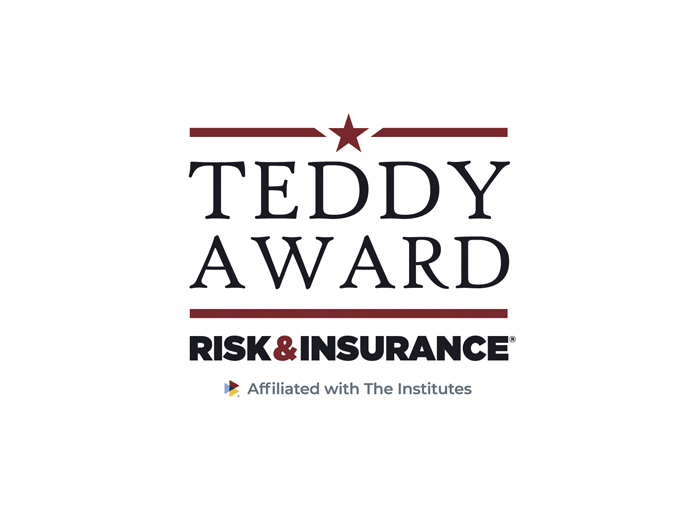 The Teddy Award, established in 1994, was named in honor of President Theodore “Teddy” Roosevelt, who introduced the first piece of significant workers’ compensation legislation in the U.S. The Teddy Award honors employers across the country for achieving excellence in workers’ compensation and injury prevention.
The Teddy Award, established in 1994, was named in honor of President Theodore “Teddy” Roosevelt, who introduced the first piece of significant workers’ compensation legislation in the U.S. The Teddy Award honors employers across the country for achieving excellence in workers’ compensation and injury prevention.
To view the four winners selected for 2023, visit here.

